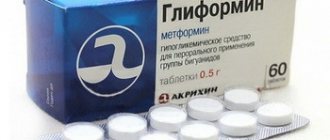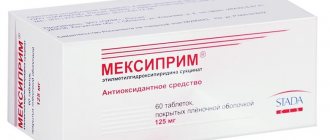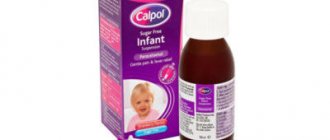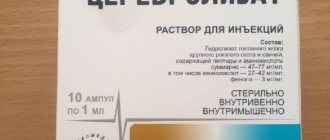Toujeo SoloStar is a modern long-acting insulin. The manufacturer is the well-known pharmaceutical company Sanofi, which produces various insulins for diabetics (Apidra, Lantus, Insuman).
In Russia, Toujeo was registered in 2021 under the name “Tujeo”. In Ukraine, the drug is called Toozheo. This is an improved analogue of Lantus. By increasing the concentration of insulin glargine to 300 U/ml, the risk of hypoglycemia is reduced and the duration of action of the drug is increased. Intended for adults with type 1 and type 2 diabetes mellitus. The main advantage of Tujeo is its peak-free glycemic profile and action time of up to 35 hours.
Forms of release and composition of the drug, manufacturer
Insulin Tujeo SoloStar (price, reviews and instructions for use of the drug must be studied by the patient before use) is a solution that is administered subcutaneously. Insulin glargine is used as the active component.
Additional substances include:
- Zinc chloride.
- Metacresol.
- Sodium hydroxide.
- Hydrochloric acid.
- Purified water.
- Glycerol.
Toujeo Solostar
The solution of the drug is transparent, colorless. The drug has hypoglycemic pharmacological properties, and the hormonal component present in the composition is long-acting insulin.
The drug is available in the form of a solution contained in small cartridges with a volume of 1.5 ml. You can purchase 5 insulin syringe pens in a cardboard package.
Comparison with analogues
The drug Tujeo Solostar has an active analogue Lantus, which has the same pharmacological effect, but contains a smaller amount of the active component, and therefore has a reduced therapeutic effect.
We invite you to read: Augmentin suspension for children and adults instructions for use
Tujeo Solostar differs from other insulin preparations in its properties. The difference with the most commonly used analogues is shown in the table.
| Name, active substance | Manufacturer | Advantages and disadvantages | price, rub. |
| Lantus, insulin glargine | Sanofi-Aventis, Germany | Pros: can be prescribed to children from the age of six. Cons: lower concentration of the active substance, the effect ends faster. | 3700/5 syringe pens, 3 ml each |
| Levemir, insulin detemir | Novo Nordisk, Denmark. | Pros: suitable for pregnant women and children over 6 years of age, but with precise dosage adjustment. Cons: validity period is no more than a day. | From 2800/5 syringe pens 3 ml |
| Tresiba, degludec | Novo Nordisk, Denmark. | Pros: lasts up to 42 hours. Can be used for children from one year old. Cons: very expensive, not always available in the pharmacy. | From 7600 |
Pharmacological properties
Insulin Tujeo SoloStar (the price of the drug is justified by its effectiveness, as well as its long-lasting hypoglycemic effect) is intended for the treatment of type 1 and type 2 diabetes mellitus.
The medication contains glargine, which is the latest generation of insulin. The drug helps to normalize the patient’s condition without sharp fluctuations in glucose levels. The medicine has an improved form, which makes the therapy safer.
The period of activity of the drug is from 24 to 34 hours. The active component of the drug is similar to insulin, which is produced by the human body.
If the recommended dosage is observed, the drug has a positive therapeutic effect, improving glucose metabolism. The drug helps increase protein synthesis and also suppresses the formation of sugar in the liver. The components included in the composition normalize the absorption of glucose by body tissues.
The drug dissolves well in an acidic environment, is gradually absorbed and distributed evenly throughout the body. The maximum activity is 36 hours. The half-life is 19 hours.
The difference between Tujeo and Lantus
Studies have shown that Toujeo demonstrates effective glycemic control in type 1 and type 2 diabetics. The decrease in the level of glycated hemoglobin in insulin glargine 300 units did not differ from Lantus. The percentage of people achieving target HbA1c levels was similar, and the glycemic control of the two insulins was comparable.
Compared to Lantus, Toujeo has a more gradual release of insulin from the precipitate, so the main advantage of Toujeo SoloStar is the reduced risk of developing severe hypoglycemia (especially at night).
More information about Lantus
Advantages of Toujeo SoloStar:
- duration of action up to 36 hours;
- concentration 300 U/ml;
- smaller injection volume (Toujeo units are not equivalent to units of other insulins);
- the patient's weight remains stable;
- lower risk of developing nocturnal hypoglycemia.
Flaws:
- not used to treat diabetic ketoacidosis;
- safety and effectiveness in children and pregnant women have not been confirmed;
- not prescribed for kidney and liver diseases;
- due to the high concentration of this insulin, the needle sometimes becomes clogged due to the formed crystals;
- individual intolerance to glargine.
review of Tujeo SoloStar insulin glargine
Pharmacodynamics and pharmacokinetics
Insulin Tujeo SoloStar is slightly overpriced, but the components included have a prolonged hypoglycemic effect and are also well tolerated by patients. 1 ml of the drug contains 300 units of insulin.
When compared with the common drug Lantus, the dose of the active component in Toujeo Solostar is 3 times greater. Increased protein production has an inhibitory effect on glucose synthesis by liver cells. In this case, the process of glucose absorption by tissues is stimulated.
Insulin regimen
Subcutaneous administration in the abdomen, thighs and arms. The injection site should be changed every day to prevent scarring and damage to the subcutaneous tissue. Administration into a vein can cause an acute attack of hypoglycemia. The drug has a prolonged effect if injected under the skin. Insulin dosing is carried out using a syringe pen, the injection involves up to 80 units. It is possible to increase the dose during use of the pen in increments of 1 unit.
The pen is designed for Tujeo, eliminating the need to recalculate the dosage. A regular syringe can destroy the drug cartridge and will not allow you to accurately measure the insulin dose. The needle is disposable and must be replaced with each injection. The syringe works correctly if a drop of insulin appears at the tip of the needle. Given the thinness of insulin syringe needles, there is a risk of them clogging during secondary use, which will not allow the patient to receive an accurate dose of insulin. The pen can be used for a month.
Indications for use
The described remedy is intended for the treatment of those patients who have been diagnosed with diabetes mellitus. The drug can be used by elderly people over 65 years of age, as well as those with kidney or liver failure.
In people of retirement age, kidney function may deteriorate due to the presence of concomitant diseases, which will reduce the need for insulin. In case of kidney failure, the patient needs to use insulin less often, as the body's metabolism slows down.
Due to the long-term effect of the medication, you can change the time of injection, as well as increase the interval between procedures. When using the described medication, the concentration of glucose in the blood decreases gradually. Thanks to this, you can choose the optimal dose of insulin therapy, minimizing the likelihood of sudden surges in blood sugar levels.
The manufacturer claims that the drug is equally effective regardless of the gender or age of the patient. The medicine can be injected under the skin at the same time or on a special flexible schedule. The components included are safe for patients over 65 years of age. The drug maintains the normal physiological state of the patient and reduces the likelihood of complications.
Method of administration
Toujeo is administered only subcutaneously using a syringe pen. Recommended area: anterior abdominal wall, thigh, superficial shoulder muscle. To prevent the formation of wounds, change the injection site no further than one zone. It is prohibited to administer the medicine using infusion pumps.
Patients with type 1 diabetes take Tujeo in an individual dosage in combination with short-acting insulin. Patients with type 2 diabetes are administered the drug as monotherapy or in combination with tablets at a dose of 0.2 units/kg with possible adjustment.
Attention! Before administration, keep the medicine at room temperature.
The drug Tujeo Solostar is available in the form of a solution, which is intended for subcutaneous administration by injection. The injection is given in the shoulder, abdomen or thigh area. The recommended dosage and duration of therapy is determined by the attending physician after examining the patient, collecting tests, determining the medical history and taking into account the individual characteristics of the patient’s body.
In addition, all medications have instructions for use, which reflect the rules for using the drug. Therapy for children: the medication should not be prescribed to children under 18 years of age, since there is no information about the effect of the drug components on the growing and developing child’s body.
Therapy for elderly patients: the medication is allowed to be prescribed to elderly patients, and no dose adjustment is required. Treatment of patients with kidney disease: the medication can be prescribed to patients with kidney disease.
In this case, the attending physician must monitor blood glucose levels, and the dosage is determined on an individual basis. Treatment of patients with liver diseases: the drug is prescribed to patients with liver diseases. In this case, the attending physician should monitor blood glucose levels.
Toujeo SoloStar® units (insulin glargine 300 U/ml) refer only to Toujeo SoloStar and are not equivalent to other units expressing the potency of other insulin analogues. Tujeo SoloStar should be administered subcutaneously once a day at any time of the day, preferably at the same time.
The drug Tujeo SoloStar, when administered once a day, allows for a flexible injection schedule: if necessary, patients can inject within 3 hours before or 3 hours after their usual time of administration.
Monitoring of blood glucose concentrations is recommended in all patients with diabetes mellitus.
Starting to use Tujeo SoloStar:
- Patients with type 1 diabetes mellitus. Tujeo SoloStar should be used once a day in combination with insulin administered during meals, and requires individual dose adjustment.
- Patients with type 2 diabetes mellitus. The recommended initial dose is 0.2 IU/kg 1 time per day, followed by individual dose adjustment.
Switching from the administration of insulin glargine 100 U/ml to the drug Tujeo SoloStar and, conversely, from the drug Tujeo SoloStar® to insulin glargine 100 U/ml
Insulin glargine 100 U/ml and Tujeo SoloStar are non-bioequivalent and not directly interchangeable.
- Switching from insulin glargine 100 U/mL to Toujeo SoloStar can be done on a unit-by-unit basis, but a higher dose of Toujeo SoloStar may be required to achieve the target plasma glucose concentration range.
- When switching from the use of Tujeo SoloStar to insulin glargine 100 U/ml, to reduce the risk of hypoglycemia, the dose should be reduced (by approximately 20%) followed by dose adjustment if necessary.
Close metabolic monitoring is recommended during and for the first few weeks after switching from one of these drugs to another.
Switching from other basal insulins to Tujeo SoloStar
When switching from a treatment regimen with intermediate- and long-acting insulins to a treatment regimen with Tujeo SoloStar, it may be necessary to change the dose of basal insulin and adjust the simultaneously administered hypoglycemic therapy (changes in the doses and timing of administration of short-acting insulins or fast-acting insulin analogues, or doses of non-insulin hypoglycemic drugs ).
- The transition from a single daily administration of basal insulin to a single daily administration of the drug Tujeo SoloStar can be carried out at the rate of one unit per unit of the previously administered dose of basal insulin.
- When switching from twice daily administration of basal insulin to a single administration of Tujeo SoloStar, the recommended initial dose of Tujeo SoloStar is 80% of the total daily dose of basal insulin, treatment of which is discontinued. Patients with high doses of insulin, due to the presence of antibodies to human insulin, may have an improved response to Toujeo SoloStar.
During the transition to Tujeo SoloStar and for several weeks after it, careful metabolic monitoring is recommended.
Contraindications
Insulin Tujeo SoloStar (price, contraindications and side effects are described later in the article) cannot be used by all categories of patients.
The main contraindications include:
- Pediatric age (patient under 18 years old).
- Increased sensitivity of the body to the components of the drug.
- Diagnosed endocrine pathologies.
- Chronic liver and kidney diseases in the acute stage.
Endocrinologists note that when using insulin, it is necessary to keep the condition of patients over 65 years of age under control, since in this category of people the metabolism gradually slows down. You need to check your glucose levels periodically.
Patients need to learn how to administer medications and treat hypoglycemia or hyperglycemia. For a person with kidney disease, the dosage of the drug must be selected individually, since his ability to gluconeogenesis is significantly reduced.
Indications and contraindications
Indications for use:
- Type 1 diabetes in combination with short-acting insulin;
- Type 2 diabetes as monotherapy or with oral antidiabetic drugs.
Toujeo is not recommended for use in the following situations: hypersensitivity to the hormone or components of the medication, age under 18 years, due to the lack of safety data.
The following group of patients should be treated with particular caution:
- in the presence of an endocrine disease;
- elderly people, patients with kidney disease;
- in the presence of liver dysfunction.
In these groups of people, the need for the hormone may be lower because their metabolism is weakened.
Important! During the research, no specific effect on the fetus was found. The drug can be prescribed during pregnancy if necessary.
Instructions for use, dosage
Insulin Tujeo SoloStar (the price of the drug depends on the markup of the selected pharmacy chain) is available in the form of injections. The drug is administered subcutaneously at the same time.
The maximum difference in the time of administration of the medication should be 3 hours. If the patient does not administer the medication in a timely manner, then he needs to check the blood for glucose concentration, and then return to the previous treatment schedule. It is forbidden to administer a double dose of insulin, as this will negatively affect the functioning of the entire body.
If type 1 diabetes is diagnosed, the medicine must be administered with meals along with rapid-acting insulin.
For a person with type 2 diabetes, Toujeo Solostar is recommended to be combined with other hypoglycemic medications. At the first stage, 0.2 U/kg should be administered over several days. It is forbidden to administer insulin intravenously, as there is a risk of severe hypoglycemia.
To achieve maximum therapeutic effect, it is recommended to adhere to the following scheme of actions:
- You need to get the syringe pen out of the refrigerator in 60-75 minutes. before use. Cold medicine can also be injected under the skin, but this procedure will be accompanied by painful symptoms. You need to double-check the expiration date of the drug. It is forbidden to use insulin that has lost its transparency.
- It is necessary to remove the protective coating applied by the manufacturer from the needle, screw it until it stops to the syringe (no force required). You need to remove the outer cap from the needle, but do not throw it away. But the inner cap cannot be reused.
- There is a special dose counter window on the syringe. Thanks to this innovation, you do not need to calculate the dosage yourself. The syringe needs to be filled to 3 units, rotating the dose sector until the pointer stops at the desired number. You should press the dosage control button. If a drop of liquid appears on the surface, then you can use a syringe pen. Otherwise, the patient will have to repeat all the steps from the beginning. If the result does not change, then the needle is faulty.
- Only after attaching the needle can you draw insulin and press the dosing button. If the number of units is insufficient, the drug can be administered in 2 injections, but with a new needle.
- The medicine can be injected into the shoulder, thigh or abdomen. By pressing the dosing button, you need to wait until the number “0” appears in the window. The patient must count to 5, after which the button can be released and the needle removed (only through this will the full dose of insulin be received). The sites for administering the medication must be constantly alternated.
- All that remains is to take the outer cap and insert the needle into it, the product must be disposed of. The syringe must be capped and left in a place inaccessible to UV radiation.
For the treatment of type 1 diabetes mellitus, Toujeo Solostar is administered no more than 1 time per day along with short-acting insulin. Periodically adjusting the dosage, which depends on the age, weight and condition of the patient. For type 2 diabetes mellitus, the dosage of the medication should be within 0.2 U/kg of weight.
Side effects
In exceptional cases, Tujeo SoloStar may cause unwanted reactions.
Some side effects are possible during therapy.
- Metabolic processes: hypoglycemia is a condition that occurs when a larger dose of insulin is consumed than the body needs. May be accompanied by fatigue, drowsiness, headache, confusion, and convulsions.
- Organs of vision: disturbance of turgor and refractive index of the lens. Symptoms are short-lived and do not require treatment. Transient vision loss rarely occurs.
- Skin and subcutaneous tissues: lipodystrophy and local reactions in the injection area. It is observed in only 1–2% of patients. To prevent this symptom, you need to change injection sites frequently.
- Immunity: systemic allergies in the form of edema, bronchospasm, decreased blood pressure, shock.
- Other reactions: Rarely, the body develops tolerance to insulin, forming specific antibodies.
To prevent any side effects, the patient is recommended to undergo a full examination. Always follow the treatment regimen prescribed by your doctor. Self-medication can be life-threatening.
Side effects
The risk of adverse reactions was studied through special clinical studies when using insulin at a dosage of 100 U/ml.
Experts were able to determine that the most common negative reaction is hypoglycemia, which develops as a result of significantly exceeding the permissible dosage. This side effect is accompanied by a strong feeling of hunger, nervous overexcitation, anxiety, tremor of the upper extremities, and tachycardia.
As neuroglycopenia develops, the patient may be bothered by the following symptoms:
- Migraine.
- Increased fatigue.
- Deterioration of vision.
- Loss of consciousness.
- Drowsiness.
- Nausea.
- Cramps.
Short-term vision problems may occur as a result of constant monitoring of glucose levels. This occurs due to a short-term disturbance in the refraction of the lens. After a few days, the functioning of the visual system will be restored, and the risk of developing retinopathy will decrease. In severe cases, hypoglycemia can cause temporary vision loss.
Lipodystrophy may occur at the injection site, which can slow down insulin absorption. But when using glargine, such an adverse reaction bothers patients only in 2% of all cases. Changing the injection areas will help reduce the likelihood of developing lipodystrophy.
Local reactions include:
- Development of the inflammatory process.
- Itching, burning of the skin.
- Swelling.
Allergic reactions occur in isolated cases. Most often, hypersensitivity to the components of the drug is manifested by the Quincke response, a sharp decrease in pressure. In isolated cases, side effects can threaten the patient's life, which will require urgent medical attention.
Overdose and adverse reactions
Typically, an overdose occurs when a person makes a mistake in calculating the dose and injects insulin in an amount that exceeds the body's needs. In this case, a hypoglycemic state occurs.
If it is mild, additional intake of carbohydrates or glucose will help. If severe, loss of consciousness and coma may occur. It is impossible to do without medical help. Treatment involves the administration of glucose or glucagon.
Side effects that may occur:
- the most common is hypoglycemia;
- neuroglycopenia (manifested by fatigue, weakness, excessive drowsiness, visual disturbances, etc.);
- temporary loss of vision;
- changes in the areas of fatty tissue where insulin injections were most often made (which affects the rate of absorption of subsequent doses);
- redness of the skin, itching, rash, swelling at the injection sites.
If any unwanted reactions occur, you should immediately contact your doctor so that he can adjust the insulin dosage or select a different insulin.
Overdose
A significant deterioration in the patient’s well-being can occur if the dosage of the administered drug is several times higher than the norm established by the endocrinologist. An overdose can be severe or mild. In the latter case, hypoglycemia is corrected by taking glucose or carbohydrates.
In severe cases of overdose, loss of consciousness and coma are possible, which will require qualified medical assistance. To improve the patient's condition, glucagon or glucose is administered. After this, the endocrinologist monitors the patient’s condition to avoid repeated episodes.
Reviews
I have been using Tujeo for several months now; the doctor replaced the previously used Levemir insulin with it. I am satisfied with the effect, my sugar remains normal, I feel good, there have been no attacks of hypoglycemia.
Olesya, 39 years old
“Tujeo” is the most effective drug that my doctor prescribed to me. It maintains sugar levels evenly and does not provoke nighttime hypoglycemia. I have been using the drug for a long time, I don’t plan to, the effect has not worsened over time.
Anna, 58 years old
Reviews about the drug
special instructions
During the period of bearing a child, insulin can be used only after preliminary consultation with a gynecologist. The need for use of this drug may be reduced in the 1st trimester of pregnancy and gradually increased during the 2nd and 3rd trimesters.
After the birth of a child, the likelihood of developing hypoglycemia increases. Endocrinologists attach great importance to constant monitoring of the ratio of glucose in a woman’s blood.
Additionally, patients should take into account the following nuances of using the drug:
- Even when changing the needle, the syringe can only be used by one patient.
- The needle must be changed before each injection. Otherwise, the product may become clogged, causing the dosage to be incorrect.
- You should always have extra sterile needles on hand, as well as an alcohol wipe and a container for collecting used material.
- It is necessary to do a safety test before each injection.
Do not dilute or mix the described drug with other medications. You can use the syringe pen only after reading the attached instructions.
The described drug has the following positive characteristics:
- Adverse reactions develop in rare cases.
- The drug is effective for 34 hours.
- With regular use of the product, you can avoid gaining excess weight.
- The likelihood of hypoglycemia at night is significantly reduced.
- To achieve the desired therapeutic effect, a small dosage of the drug is needed, due to which insulin is consumed much more economically.
- High compensating properties.
- The drug acts smoothly, eliminating the risk of a sudden increase in blood glucose levels.
Among the disadvantages of the drug is that Tujeo SoloStar is not used for the treatment of diabetic ketoacidosis. The drug cannot be used in pediatrics.
Features of application
To avoid negative reactions, you should consider some features of taking the medicine for type 1 and 2 diseases:
- Older generation. Some treatment differences exist for older patients. People 65 years of age or older should start treatment with lower doses to avoid sudden complications. Dosage increases are slower than in other age groups. The individual characteristics of the elderly person’s body are taken into account, and glucose concentration is constantly monitored.
- Overweight people. The drug is highly effective and there are no differences among the obese group.
- Impaired kidney function. In a study on a group of people with renal failure, the drug showed a high level of safety. During treatment, it is necessary to monitor the hormone in the blood and take into account the individual characteristics of the patient’s body.
- Childhood. There is no data on the safe use of the drug in children.
In addition to Tujeo Solostar, other modern medicines have been developed.
Levemir Flexen
Another effective hypoglycemic drug is Levemir Flexen, which is also available in the form of an injection pen. The product is based on insulin detemir. The maximum effect after the administration procedure occurs after 14 hours, single or double administration is possible. Used in adults, effective and safe for children over 2 years old.
Mechanism of action
The soluble substance consists of basal insulin with a lower profile compared to insulin glargine. The inactivation of Levemir Flexen is similar to the human hormone.
Main properties of Levemir Flexen
Insulin apidra
An analogue of the human hormone contains insulin glulisine, but it begins to regulate metabolic processes faster. The hypoglycemic effect of the drug ends faster compared to its human counterpart.
The maximum concentration is reached after 15 minutes. The drug is used for children over 6 years of age and for adults with an insulin-dependent form of the disease. The dosage depends on the type of disease and the patient’s condition.
Insulin apidra and its properties
Drug interactions
Some medications can affect glucose metabolism. MAO and ACE inhibitors, salicylates, sulfonamides can increase the final hypoglycemic effect of insulin.
When these drugs are combined, the risk of hypoglycemia increases. The effectiveness of insulin can be weakened by diuretics, corticosteroids, sympathomimetics, as well as protease inhibitors and phenothiazine derivatives.
Clonidine, as well as ethanol and lithium salts can significantly enhance or weaken the final therapeutic effect. If you combine insulin with pentamidine, you can ultimately increase the likelihood of developing hypoglycemia, which can develop into hyperglycemia.
The most dangerous is the combination of guanethidine, beta-blockers and clonidine with the described insulin, since there may be no symptoms of the central nervous system response to hypoglycemia. When used together with pioglitazone, pathologies of the cardiovascular system may occur.
Analogs
If there is an individual intolerance to the components of the described drug, it can be replaced by basal insulins, which belong to a new generation of drugs. But it is better to entrust the choice of a suitable analogue to an endocrinologist, who will draw up a drug treatment regimen and select the optimal dosage of the drug.
| Drug name | Description |
| Tresiba | Effective long-acting insulin. Each injection has a positive effect on the patient’s body for 42 hours. With this medicine it is easy to control blood glucose levels. The drug can be used to treat adults and children over 1 year of age. The optimal dosage of insulin is selected individually, since everything depends on the age, weight and condition of the patient. The manufacturer recommends administering the medicine once a day. |
| Toujeo | A hypoglycemic drug used in the treatment of type 1 and type 2 diabetes mellitus. Injections must be administered once a day. For the treatment of type 2 diabetes mellitus, the standard daily dose should not exceed 200 units. If this dose of insulin is not enough for the patient, then additional medications with hypoglycemic properties can be selected. |
| Lantus | This is one of the first analogues of human insulin. The drug is indicated for adults and children over 2 years of age with diabetes mellitus type 1 or 2 (in case of ineffectiveness of tablet medications). The drug should not be used for the treatment of diabetic ketoacidosis, as well as for hypoglycemia. |
| Levemir | The drug is intended for the treatment of type 1 and type 2 diabetes mellitus in adults and children over 2 years of age. The dosage for each patient is selected individually. The initial dose is 10 units. Most often, the injection is administered to the front of the abdomen or thigh, shoulder, deltoid or buttock area. |
| Aylar | This drug belongs to the category of antidiabetic immunobiological drugs, analogues of human insulin. The dosage of the drug is individual, as it all depends on the blood sugar level, the amount of carbohydrates consumed, and physical activity. The standard daily dose is in the range of 0.3-1 IU/kg. With obesity, as well as during pregnancy, patients' need for insulin increases significantly. |
| Bazaglar | This insulin is a medium-acting drug. The medicine was obtained using special recombinant DNA technology. The drug begins to act after 90 minutes. Before using the medication, you should consult with an endocrinologist to eliminate the possibility of adverse reactions. |
| RingGlar | The drug can be used for the treatment of diabetes mellitus in children from 2 years of age. The medicine must be administered subcutaneously once a day. RinGlar can be prescribed for monotherapy, as well as in combination with other hypoglycemic medications. |
A qualified endocrinologist should select a high-quality analogue, who will conduct a comprehensive examination of the patient’s health status and eliminate the likelihood of adverse reactions.
pharmachologic effect
Long-acting insulin that regulates glucose metabolism. When consumed, tissues are stimulated to absorb glucose, inhibit it in the liver and reduce the overall concentration. Protein synthesis is further enhanced.
Glargine works similarly to human insulin. The period of exposure is from 24 to 36 hours - depends on the presence of physical activity and other related factors. Less likely to cause hypoglycemia compared to analogues, including at night. It has almost no effect on changes in body weight, but at the same time requires proper nutrition.
- Hypoglycemia.
- Lipodystrophy.
- Allergic reactions.
- Reactions at injection sites (itching, redness, swelling).
- Retinopathy.
- Edema.
- Myalgia.
- Digestive disorders.
Symptoms are relieved by adjusting the dosage or discontinuing the medication.
Drugs that enhance the action of insulin glargine:
Drugs that weaken its effects:
- glucocorticosteroids;
- danazol;
- diazoxide;
- diuretics;
- glucagon;
- isoniazid;
- estrogens and progestogens;
- phenothiazine derivatives;
- somatropin;
- sympathomimetics;
- thyroid hormones;
- atypical antipsychotics;
- protease inhibitors.
Substances that produce different effects when taken together:
- beta blockers;
- clonidine;
- lithium salts;
- ethanol
Medicines that mask the symptoms of hypoglycemia:
- beta blockers;
- clonidine;
- guanethidine;
- reserpine.
Insulin glargine is an analogue of human insulin, obtained by recombination of DNA from bacteria of the species Escherichia coli (strains K12) and is characterized by low solubility in a neutral medium.
In patients with type 2 diabetes mellitus, the results of clinical studies have demonstrated a lower incidence of severe and/or confirmed hypoglycemia, as well as documented hypoglycemia occurring with clinical symptoms, when treated with Tujeo SoloStar compared to treatment with insulin glargine 100 U/ml.
We suggest you read: How to use the accu chek performa glucometer
The superiority of Tujeo SoloStar over insulin glargine 100 U/mL in reducing the risk of severe and/or documented nocturnal hypoglycemia was demonstrated in patients previously treated with oral hypoglycemic agents (23% risk reduction) or mealtime insulin (21% risk reduction) during the period from the 9th week to the end of the study, compared with treatment with insulin glargine 100 U/ml.
Terms, conditions of sale and storage
You can buy the drug only with a doctor's prescription. Insulin should be stored in a cool place, at a temperature from +3 to +8 C. Freezing the medicine is prohibited. After the first use, the syringe pen is allowed to be used for 28 days. The syringe should be stored out of the reach of children and in a well-ventilated place. The room temperature should be between +18 and +25 C.
The syringe must be isolated from dust and dirt; the outside can be wiped with a dry, clean cloth. It is prohibited to throw or hit the product.
Reviews of Tujeo Solostar
Irina, Omsk. I have been using Lantus insulin for almost 4 years, but in the last 5 months polyneuropathy began to develop on my heels. At the hospital they adjusted me to different insulins, but they didn’t suit me. The attending physician recommended that I switch to Tujeo Solostar, because it distributes evenly throughout the body without sharp rises and falls, and also prevents the onset of cancer, unlike most types of insulin. I switched to a new drug, and after a month and a half I completely got rid of polyneuropathy on my heels. They became smooth, even and without cracks, as before the disease.
Nikolay, Moscow. I believe that Tujeo Solostar and Lantus are the same drug, only the concentration of insulin in the new drug is three times higher. This means that when injected, a dose of three times less is injected into the body. This way, insulin is gradually released from the drug, which significantly reduces the risk of hypoglycemia. We need to try new, more advanced things. Therefore, under the supervision of a doctor, I switch to Tujeo. So far, after 3 weeks of use there are no side effects.
Nina, Tambov. Previously, to alleviate the disease, I injected Levemir for a year, but gradually the injection sites began to itch, at first mildly, then more intensely, and eventually they became red and swollen. After consulting with my doctor, I decided to switch to Tujeo Solostar. After a couple of months, the injection sites began to itch much less, and the redness went away. But for the first three weeks I controlled my blood sugar levels, after which my dosage was reduced. Now I feel great, the injection sites do not itch or hurt.











